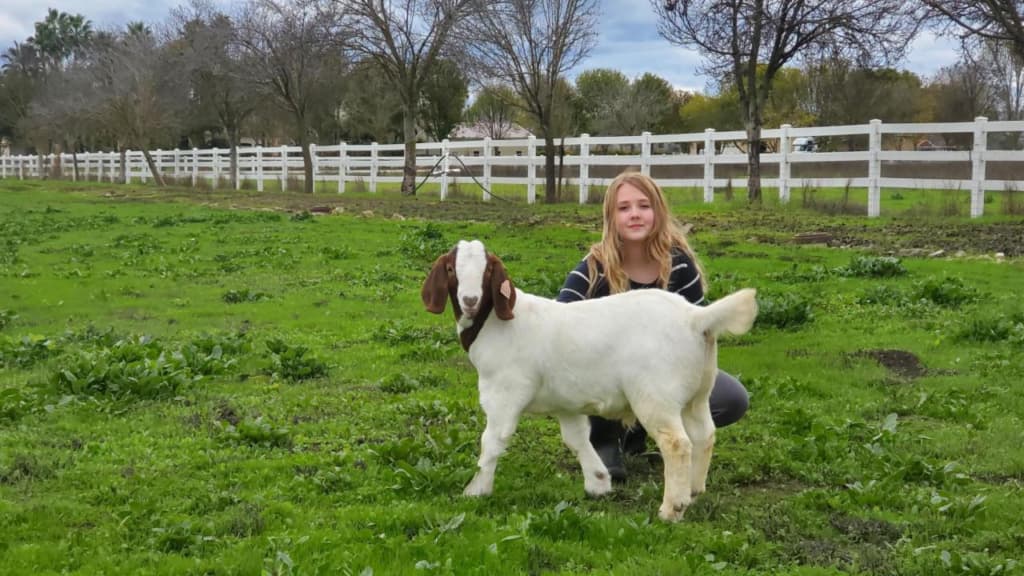The Jaffarabadi buffalo stands as a formidable breed among the Indian buffalo lineage, notably the heaviest, originating from the Saurashtra region in Gujarat, near the Gir Forest. Commonly referred to by several names, including Bhavanagri, Gir, and Jaffari, this breed derives its name from Jaffarabad town in Gujarat. It populates primarily across the Amreli, Bhavnagar, Jamnagar, Junagadh, Porbandar, and Rajkot districts. These buffaloes exhibit remarkable resilience and adaptability to their native habitat, thriving in both the forested areas adjacent to the Gir Forest and the agricultural lands of Gujarat.
Physical Characteristics
Jaffarabadi buffaloes are distinguished by their impressive physique, with males reaching up to 700 kg and females averaging around 620 kg. Their most notable feature is a large dome-shaped forehead and flat, thick horns that curve downward and then inward, forming a unique ring-like structure around their heads. This breed’s horns, contributing to a “study eye” appearance, particularly in males, are a distinctive physical trait. While predominantly black, variations include individuals with white or grey tail switches.
Milk Production and Utility
Renowned for their dairy productivity, Jaffarabadi buffaloes have an average lactation yield of 2,239 kilograms of milk, with a high butterfat content of 7.7%. Their lactation period yields range from 2,150 to 2,340 kg, highlighting their efficiency in converting roughage into rich milk. Besides their dairy prowess, male buffaloes serve effectively as draft animals, capable of transporting heavy loads, showcasing the breed’s dual utility in agricultural settings.
Habitat and Distribution
The native range of the Jaffarabadi buffalo extends across the Saurashtra region, enveloping a diverse landscape from the dense Gir forest to the agricultural districts of Gujarat. This area, spanning approximately 64,339 square kilometers, features a tropical monsoon climate with medium black soil known for its high water retention. These environmental conditions, combined with the annual monsoon, create an ideal setting for the Jaffarabadi buffalo, allowing it to flourish both in numbers and productivity.
Unique Traits of Jaffarabadi Buffaloes
- Massive Stature: Among the largest of Indian buffalo breeds, with males often weighing up to 700 kg;
- Distinctive Horns: Their horns have a characteristic downward and inward curve, creating a ring-like appearance;
- High Milk Yield: Averages 2,239 kg per lactation period, notable for high butterfat content;
- Versatile Utility: Males are valued as robust draught animals for heavy-load transportation;
- Adaptation: Excellently adapted to the tropical monsoon climate of the Saurashtra region.
Comparative Table: Indian Buffalo Breeds
| Breed | Average Weight | Milk Yield (kg/lactation) | Butterfat % | Utility |
|---|---|---|---|---|
| Jaffarabadi | Males: 700 kg<br>Females: 620 kg | 2,239 | 7.7 | Milk Production & Draught |
| Murrah | Males: 550 kg<br>Females: 500 kg | 2,500 | 7.0 | Milk Production |
| Surti | Males: 500 kg<br>Females: 450 kg | 1,800 | 6.5 | Milk Production |
| Bhadawari | Males: 450 kg<br>Females: 400 kg | 1,200 | 8.0 | Milk Production & Draught |
The Dairy Powerhouse of Gujarat
The Jaffarabadi buffalo is not just a symbol of agricultural might but also a cornerstone of rural economy in Gujarat. Its impressive milk yield with high butterfat content makes it an invaluable asset for dairy farmers. The breed’s resilience and adaptability to the harsh tropical climate of the Saurashtra region enhance its survival and productivity.
This unique combination of traits ensures the Jaffarabadi’s position as a preferred breed for milk production. The breed’s contribution extends beyond agriculture into cultural significance, representing the rich biodiversity and agricultural traditions of India. As demand for dairy continues to grow, the Jaffarabadi buffalo’s role in sustainable agriculture and food security becomes ever more critical.
Guardians of the Gir
The Jaffarabadi buffalo’s historical habitat around the Gir forest is a testament to its robust nature and adaptability. These buffaloes not only coexist with the Asiatic lion but have also been known to defend themselves effectively, showcasing their resilience. This interaction highlights the unique ecological balance within the Gir forest area, where domesticated animals and wildlife share a common habitat.
The Jaffarabadi’s ability to thrive in such environments underscores the importance of genetic diversity and adaptability in livestock breeding for ecological sustainability. As conservation efforts continue to protect India’s wildlife and natural habitats, understanding and preserving the role of native breeds like the Jaffarabadi buffalo is crucial for maintaining biodiversity.
Conclusion
In the panorama of Indian livestock, the Jaffarabadi buffalo emerges as a beacon of strength, resilience, and productivity. Its distinguished physical characteristics, unparalleled milk production capabilities, and remarkable adaptability not only highlight its importance within the agricultural and dairy sectors but also its contribution to the cultural and ecological fabric of the Gujarat region. As we delve into the essence of this majestic breed, it’s evident that the Jaffarabadi buffalo is more than just a dairy animal; it’s a symbol of the enduring harmony between nature and agriculture in India.
The ongoing preservation and appreciation of such unique breeds are vital for sustaining the agricultural diversity and heritage of the country. Looking forward, the Jaffarabadi buffalo continues to hold a promising role in the advancement of dairy production and the promotion of sustainable farming practices, ensuring food security and economic prosperity for future generations.



